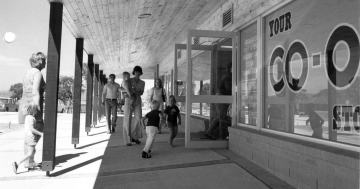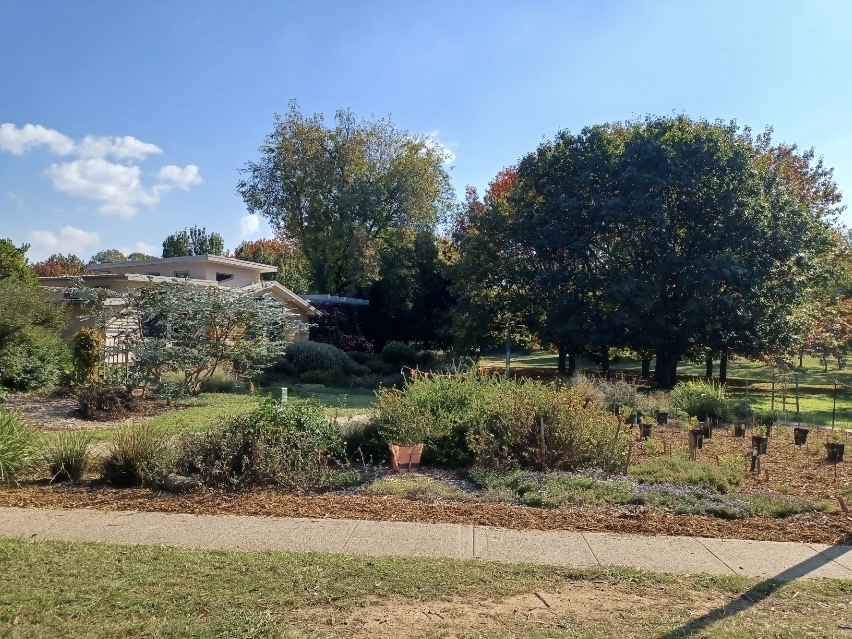
Many of the houses in Curtin open directly onto green spaces, with no fences. Photo: Richard Burns.
It’s “one of Canberra’s best-kept secrets”, and although visitors do occasionally struggle to find it, it’s not the whereabouts of Richard Burn’s front door. But it is related.
“We sometimes have people coming through into the garden, walking around the house and scratching their heads wondering where the front door is,” Richard says.
Richard and his wife moved into Curtin more than 10 years ago, in part captivated by its unique layout.
The suburb was one of four in Canberra involved in an urban planning design experiment in the 1960s called ‘Radburn’.
Originating in the United Kingdom under the early 20th-century ‘Garden City’ movement and culminating in 1929 in the ‘Radburn’ housing estate in New Jersey, US, this design flips everything we’ve come to expect from urban houses. Like a discernible front door.
He’ll be explaining all about it during a guided tour on Sunday, 21 April, as part of this year’s Canberra and Region Heritage Festival.
“Basically, there are blocks with two fronts,” Richard explains.
“One with a front to a communal park or green space, and the other facing the service road, for people arriving by car. The service entry also included an enclosed yard.”
The idea was that local shops and schools could be reached on foot without having to cross a road.
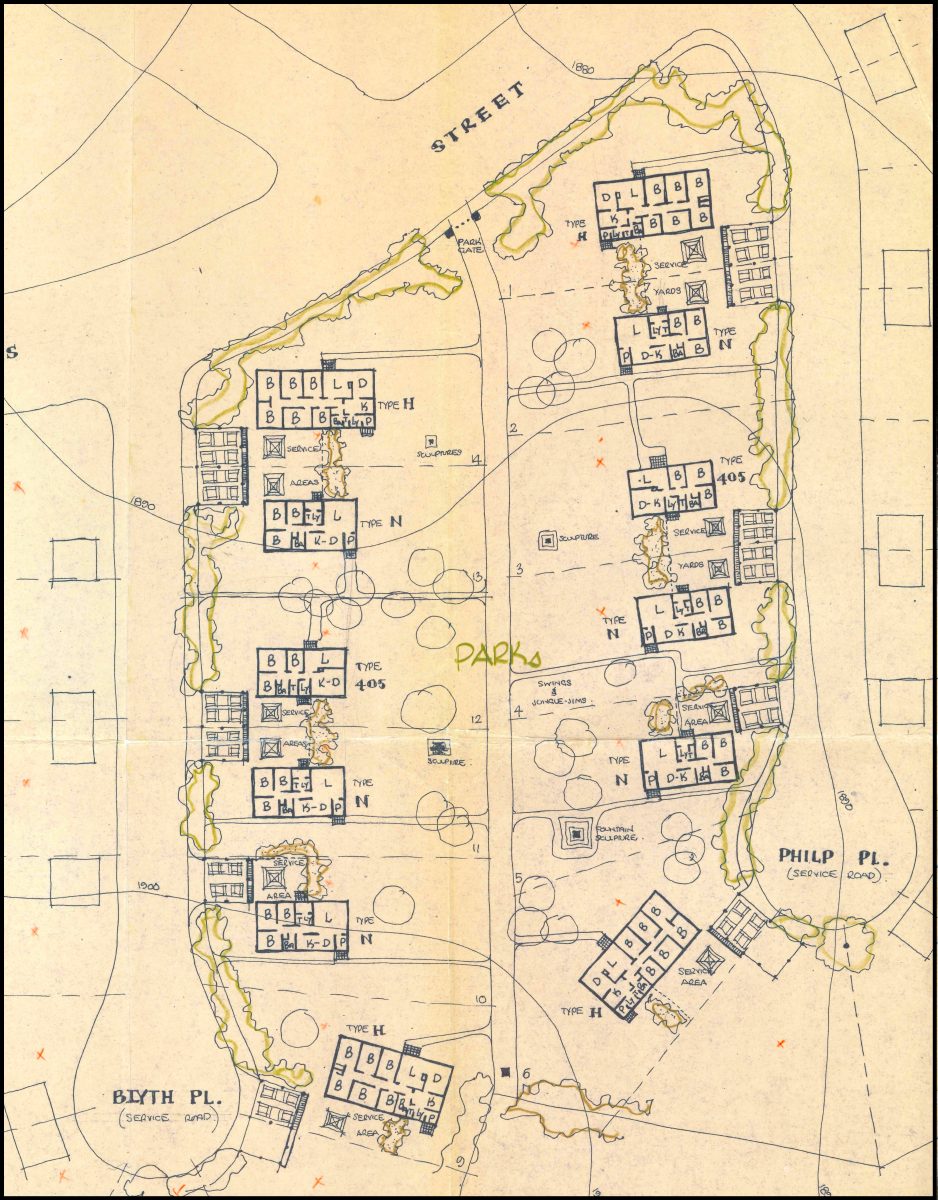
Blyth and Philip Places showing intended house sitings, internal plans, placing of carports and Hills Hoists. Photo: ArchivesACT.
“At the time, private ownership of motor vehicles was taking off in the US and people were dying on the roads,” Richard says.
“Town planners turned their minds to how they could design an urban environment that would be safe and convenient for pedestrians, and also take advantage of living in nature. They believed this would make people happier, the workforce more productive and general wealth and welfare would improve.”
The experiment was championed locally by Jack Venn, an English surveyor with the National Capital Development Commission (NCDC), right as it was trying out different urban layouts.
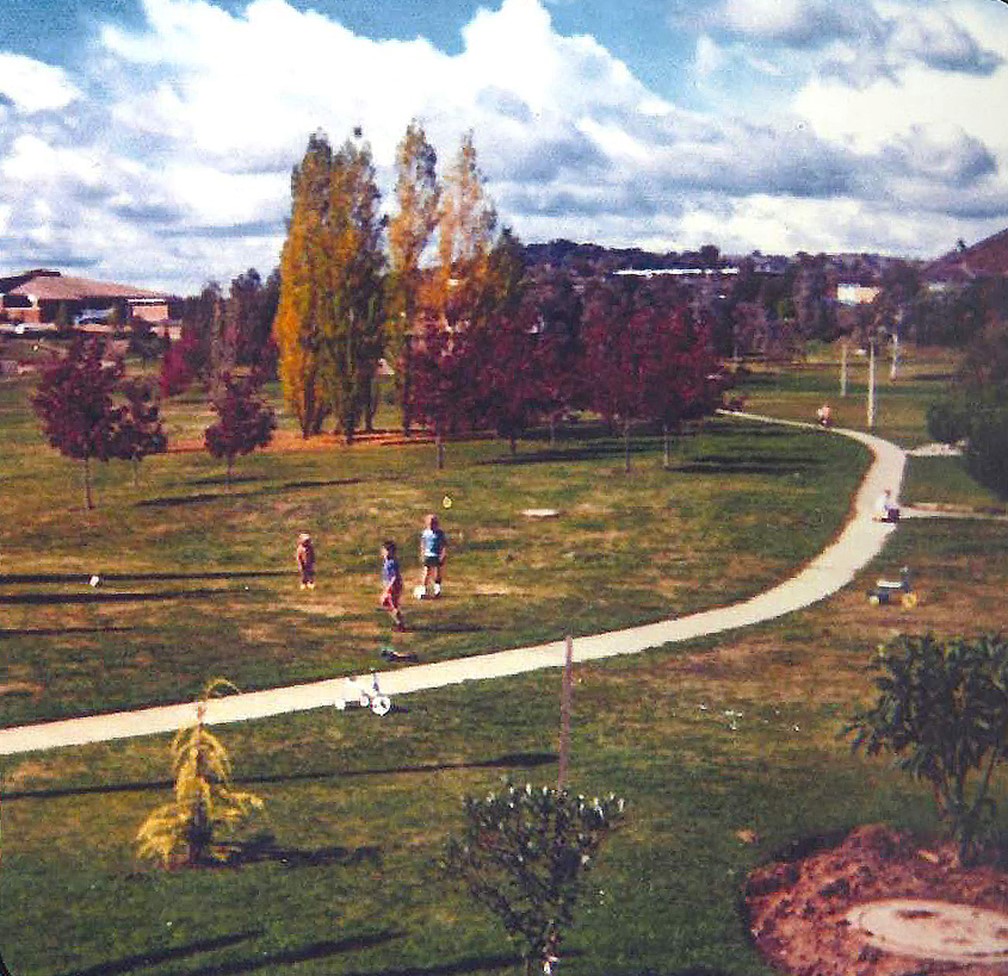
This photo from 1975 shows the main circle path linking Curtin residents to the local shops and schools. Photo: Wendy Saclier, ArchivesACT.
“The NCDC introduced the first cul-de-sac designs in the 1960s, and Swinger Hill in Woden was under development,” Richard says.
“Radburn was just another example.”
It was rolled out across Curtin, Garran and parts of Hughes, and there were teething troubles.
Jack Venn was a “stickler for the rules” which meant all the original houses were designed with the front door located on the side, equidistant from both the road and the green space.
“But the end result was very confusing,” Richard says.
“So when we renovated this house, we made the decision – the correct one to have the door next to the garage and facing the service road because that’s where most people come from.”
Real estate agents also seemed sceptical at first, as the “street frontage” pitch clearly fell over.
But for the most part Radburn worked and the community it was designed to build thrived.
“Because there are no fences in front of the building line, you can just step out onto the green space,” Richard says.
“It has that sense of openness about it.”
In the case of Curtin, the local shops are only a five-minute stroll away along a bike path that runs much of the length of the Yarralumla Creek.
“But one resident says it takes her half an hour, because she’s always stopping and talking to people as she goes, which was exactly Jack Venn’s plan – to influence people’s lives for the better.”
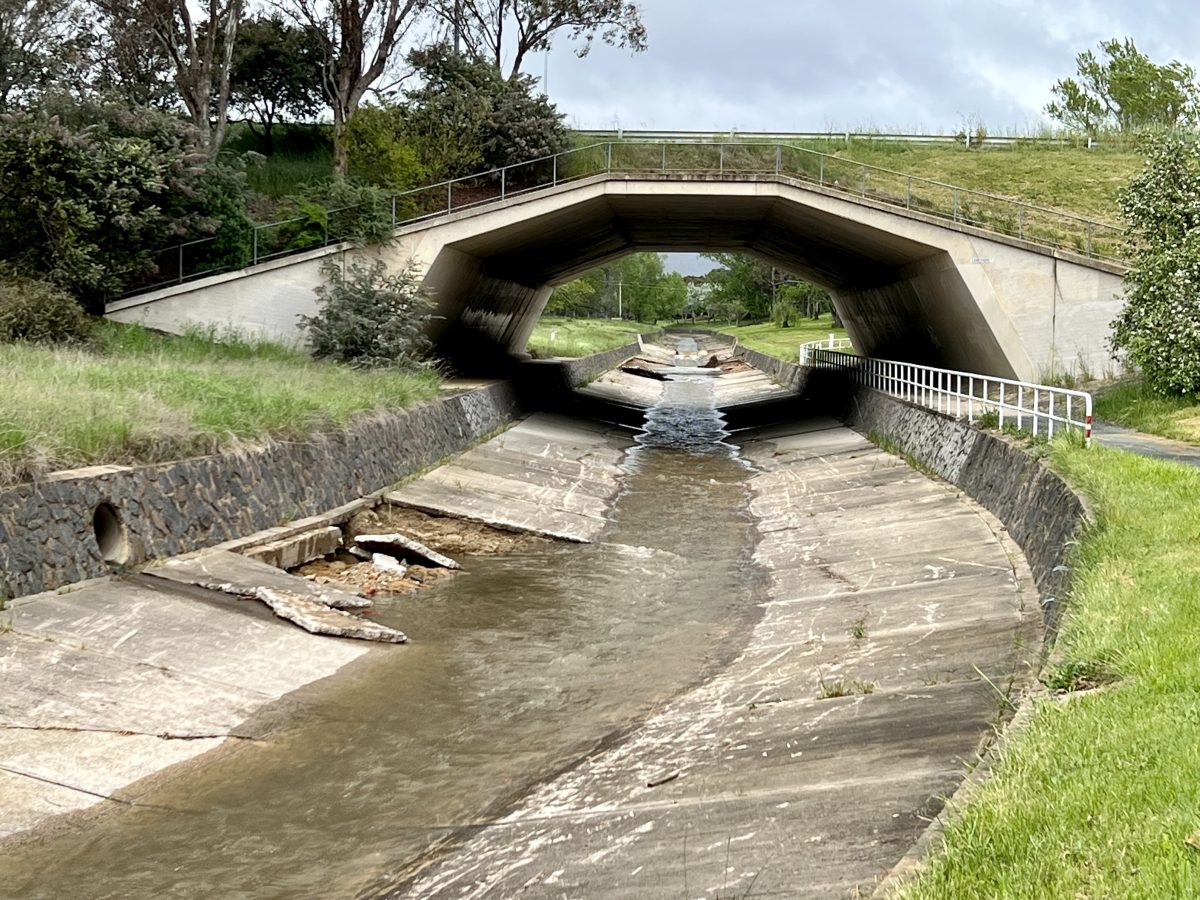
Yarralumla Creek flows along Curtin’s edge. Photo: James Coleman.
By the time it reached Charnwood in Canberra’s far north however, Radburn’s issues returned.
“Maybe it was antisocial behaviour in the parks – I don’t know – but the residents demanded the government build fences along the boundary lines, which destroys the whole concept.”
Richard says a higher priority among homeowners for privacy, together with growing concern about land availability in the ACT, put the final nails in the coffin.
“Charnwood was the last attempt to do it in Canberra.”
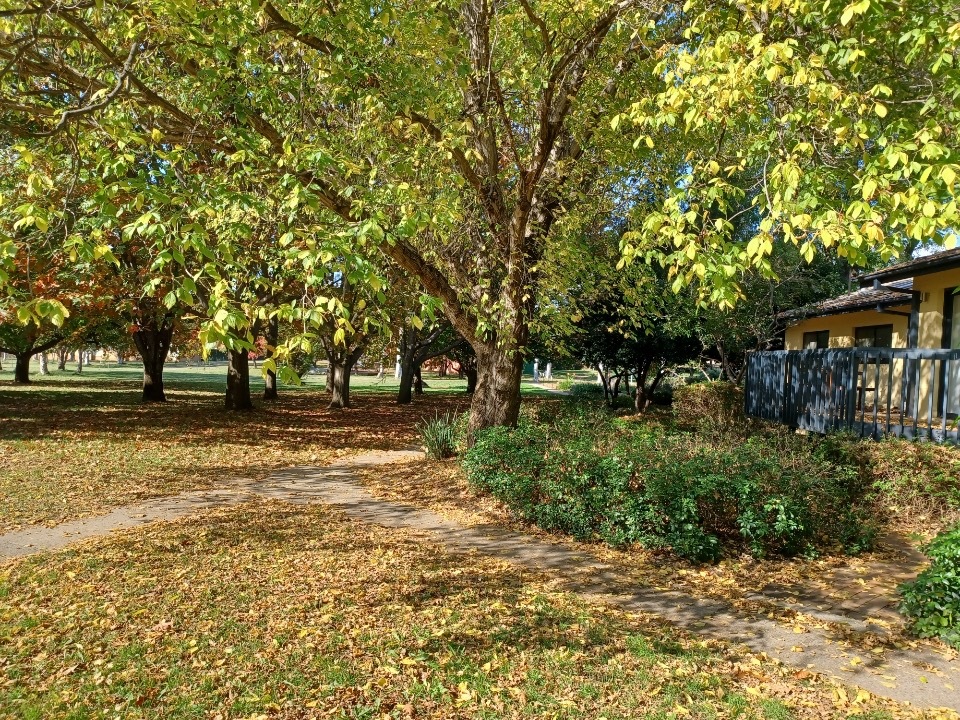
Chatting with your neighbours – love it or hate it, Radburn promotes it. Photo: Richard Burns.
Today’s real estate agents play up the unique features of Radburn and, for the Burns and many other residents, “once you’ve lived in Radburn, you never want to live anywhere else”.
Richard suspects there might even be a Radburn renaissance in coming years.
“We’re told if you can reduce your dependence on the motor vehicle, you’re doing good things for your health and the environment,” he says.
“So if urban designers and the community want to create places that are sustainable, this is a very good example to come and look at.”
Members of the public are invited to attend the Curtin Radburn Walk Around from 10 am to 11:30 am on Sunday, 21 April. For more information see the Heritage Festival website.












